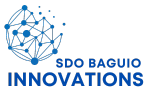Career Learning and Intervention Program
Felto Peliano Agpawa
School Head
Proponent
The Problem
The Career Learning and Intervention Program addresses the issue of young learners lacking motivation, clear career direction, and adequate preparation for the academic demands of Junior and Senior High School.
It also tackles the challenge of limited exposure to various career paths, which often results in students having a narrow perspective on future opportunities. Without a motivating factor, such as a future dream or career goal, and exposure to diverse career options, learners are less likely to perform well academically.
To better understand the current aspirations of the learners, data on career pathing was collected:
Dream Careers:
Police Officer: 9 learners
Soldier:11students
Teacher: 8 students
Doctor: 9 students
Engineer/Architect: 7 students
No specific dreams yet: 21 students
Parents’ Occupations:
Garbage Collector: 21%
Store Owners: 3%
Merchandizers/ Sales Ladies: 25%
Drivers : 6%
Construction Workers: 35%
Working Professionals: 10%
By offering early career guidance to Grade 6 students, the project aims to instill a sense of purpose and direction, helping to prevent the indecisiveness and dysfunctional beliefs that often hinder students’ academic and career success in later years.
This program helps learners explore various career options, understand the educational requirements, and align their academic efforts with their career aspirations, thereby promoting a more focused and motivated approach to their studies.
The Context
The Career Learning and Intervention Program is proposed to provide early career guidance to young learners who often lack motivation and direction due to their socio-economic and family circumstances.
Many learners come from homes where parents are frequently occupied with work and have limited involvement in their children’s education, leaving students without adequate support or exposure to diverse career options.
This environment can restrict their understanding of the purpose of schooling and future opportunities, often limiting their aspirations to what they see on television or hear from friends.
The program addresses these challenges by offering structured career guidance, helping learners gain the motivation and knowledge needed to explore a broader range of future possibilities, fostering academic engagement, and encouraging informed career planning from a young age.
Stakeholders Pain Points
LEARNERS
Learners need early exposure to diverse career options to overcome limited knowledge and unrealistic beliefs about their abilities, helping them set realistic goals and understand the necessary academic requirements for their future.
TEACHERS
Teachers need training and resources to effectively provide individualized career guidance and support to students despite time and resource constraints.
PARENTS
Some parents may lack understanding of the importance of early career guidance or struggle to align the program’s activities with their own expectations for their child’s future.
BARANGAY OFFICIALS
Officials may struggle to engage with educational initiatives, particularly in career guidance for young learners, and need structured opportunities to collaborate with schools to support these efforts.
The Solution
The solution is a comprehensive career intervention program tailored for Grade 6 learners, chosen for their developmental stage as they transition from elementary to junior high school.
Targeting Grade 6 provides early access to career guidance before students face more complex academic decisions.
The program includes career information sessions, self-awareness activities like the Multiple Intelligences test, and the RIASEC career inventory test for informed decision-making.
By focusing on Grade 6, the program offers early exposure to career options, laying a strong foundation for future educational choices.
Involving stakeholders such as partner universities like SLU, educators, parents, and local officials creates a holistic, community-wide effort to support career development, ensuring access to resources and opportunities despite socio-economic challenges.
Challenges
Age-appropriate content delivery
Limited teacher training on career education
Ensuring engagement among young learners.
Requires careful planning and resources.
Coordinating with parents
Aligning the program with school curriculum
Limited time and financial constraints.
Needed Resources
- Career Counselors ( through partnership with SLU)
- Trained Teachers
- Program Coordinator
- Technology and Materials
- Career Exploration Guides
- Lesson Plans and Curriculum Guides
- Assessment Tools
- LCD and Laptops
- Sound System
Source:
Maintenance and Other Operating Expenses (MOOE) .
Monitoring & Evaluation
Monitoring and evaluation involve systematically tracking students’ progress in understanding career pathways and aligning their perceived potentials, academic efforts, and interest as a result of the CLIP activities with future goals and career plans.
Regular assessments, such as surveys, feedback sessions, analysis of the results of Multiple Intelligence Test and Holand RIASEC career inventory test , help gauge the program’s effectiveness in fostering early career awareness.
By analyzing this data, teachers can identify areas for improvement, adjust strategies, and ensure the program is meeting its objectives, ultimately guiding learners toward informed and purposeful academic and career decisions.
Felto Peliano Agpawa
School Head
Proponent



